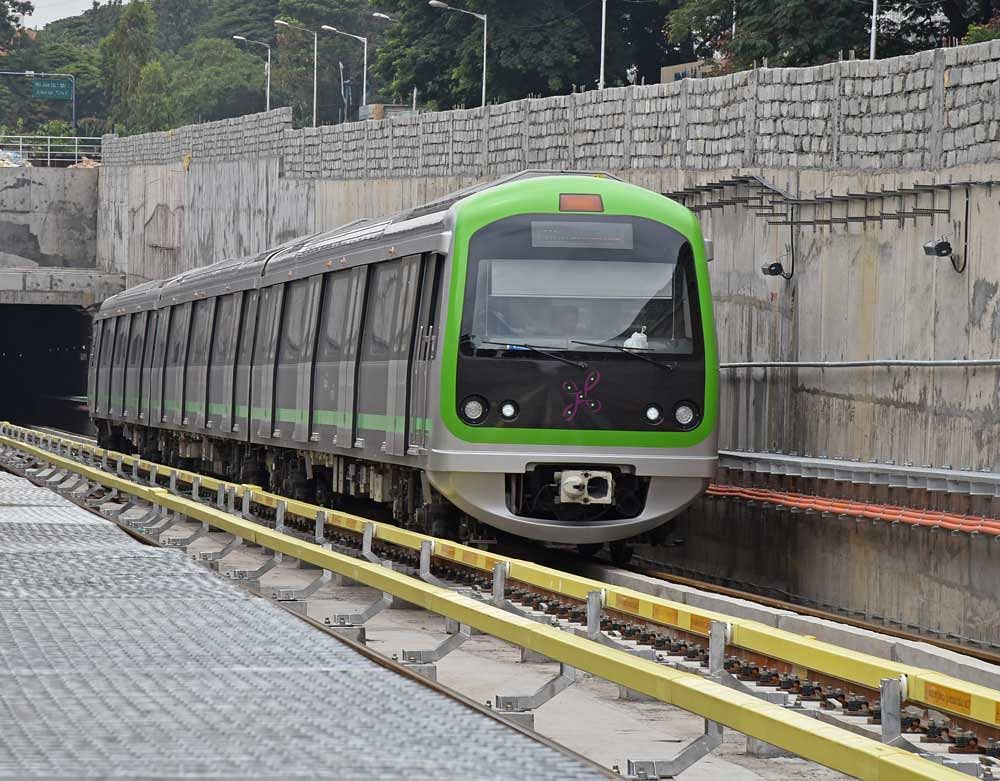Few in Bangalore Metro Rail Corporation Limited (BMRCL) today remember the details of the Namma Metro’s Phase 1 implementation. Those who were in the corporation during the execution of the project have since been either transferred or retired. Many say the combination of lack of vision and fear of cost escalation due to delay guided governments and officials to make decisions.
A senior official who was at the inception of Bangalore Mass Rapid Transport Limited, which later became BMRCL, recalls, “Whatever we learnt came directly from Delhi Metro.”
Preferring anonymity, the official notes that people had protested against cutting of trees. “Some had questioned the very need to build a Metro in Bengaluru. They said it is a fancy mode of transport and Bengaluru can ill afford to build such a costly system,” says the official.
In 2008-09, many big names in Bengaluru held a protest against the proposed metro station at Lalbagh. “They were opposing the cutting of trees and it took us months to convince them,” he says.
He agrees that Bengaluru would have fared better if the metro was built underground. But it would have meant investing nearly three times the money. The cost of Phase 1 jumped from Rs 8,158 crore to Rs 13,845 crore by the time of completion. Officials point out that going underground would not have been viable.
BMRCL informed recently that the elevated metro line costs Rs 192 crore per km whereas the underground stretch cost goes up to Rs 500 crore per km. These concerns are reflected in the corporation’s decisions, including the move to change the location of Cantonment metro station. The station will now come up far away from the railway station and help BMRCL save money.
‘Cost-effective’
In March, tenders to build Bengaluru’s biggest underground metro line, part of the Gottigere-Nagawara line, were cancelled as the bidders quoted 69% more than the cost estimated by BMRCL.
For the 13.7 km tunnel stretch, BMRCL had estimated the cost to be Rs 5,047.56 crore, but the lowest bidding amount was Rs 8,553.45 crore. Officials deliberated on ways to push the project further and finally arrived at a ‘cost-effective’ solution: reduce the tunnel section to 5.63 km.
For a corporation that faces criticism everyday due to delay in execution of projects and escalation of cost, the decision appeared inevitable. An official privy to the discussion says they could not find any other way “to ensure that the project is completed within 2021.”
The formula was set by Delhi Metro Rail Corporation (DMRC): lower cost and speed up construction.
“The DPR (detailed project report) for Phase 1 was very clear about the need for UG (underground) section. Cost became a major factor as it took almost four years for the project to take off,” he says.
Delhi metro model
At the same time, the corporation received brickbats every day. “The breakdown of tunnel boring machine in Phase 1 delayed the project by about one and a half years. Everybody blamed BMRCL for poor planning of project though all plans were done by Delhi metro,” the official says. By the time they finished the project, it was clear that the underground section had to be planned better.
“We have already postponed the official deadline of 2020. There is a general crisis in the infrastructure companies and those that have bagged the metro contract are not shielded from it. The challenge we have right now is to finish the work in time,” he explains.
BMRCL has announced March 2021 as the revised deadline for Phase 2, originally estimated to cost Rs 26,000 crore. Considering that the corporation is struggling to get bidders for even the 5.63 km of tunnel section, the idea of aesthetics prevailing over any other aspects of the project is unlikely.
However, Ashish Verma, professor at Transport Systems Engineering department in the Indian Institute of Science (IISc), says the problem goes much deeper.
“This is the result of lack of vision and why there was no vision? Because they did not allow people to take part in the planning process. They should have invited experts and general public to share their plans and the collective wisdom would have shown a better path,” he says.
